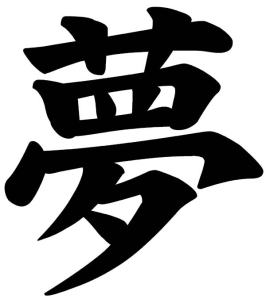こんばんは。久しぶりだね、みんなさん。
今週はTaeKimの文法ガイドの利用して多く勉強していました。夏休みにフランスにまだ。
少ない漢字を学びたけど、もっと文法を勉強しています。今日は、僕の学習方法について話したいです。はすでに学習を開始する方法について話しましたけど、次にはANKI DECKSを使用する方法である:
1. 新言葉と例文の発音を聞いてます。そして例文を言う。
2. 手で文章を書く。それは漢字の読み書きを分かるのためにです。
3. ひらがなで未知の単語を書く。
4. 本当に難しい新言葉であれば、訳書を書きます。でも、母語よりも日本語で学ぶこと良いです。
5. リピートをしてなさい。
頑張ってください!
—————————————————————————————————
Buenas noches a todos. Ha sido un largo tiempo desde que escribí en Japonés.
Esta semana he estudiado muchisimo con la guía de gramática de Tae Kim. Todavía estoy en Francia en vacaciones de verano y no he aprendido muchos Kanjis pero sí estaba practicando gramática. Quiero enseñar mi manera de aprender Japonés utilizando los Anki Decks. Ya conté cómo a empezar el aprendizaje de Japonés, pues hoy contaré cómo yo uso Anki para practicar Kanji y gramática:
1. Escuchas la pronunciación de las nuevas palabras y frases ejemplares. También hay que repetirlos en voz alta.
2. Copias la frase ejemplar a mano para comprender cómo se escribe y lee los kanjis.
3. Escribes la lectura de las nuevas palabras en Hiragana.
4. Si algúna palabra es demasiado dificil, traducelo a su idioma. Sin embargo, es mejor aprenderlos en Japonés que en su lengua materna.
5. Repitelo!
Eso fue mi manera de aprender casi entre 20 y 30 nuevas palabras cada día por las dos semanas pasadas. Se da una comprensión de cómo se estructura frases, cómo se usa algunos particulos y la conjugación de unos verbos.
Buena Suerte!
————————————————————————————————————
Good evening 😀
It’s been a long time since I wrote a piece in Japanese. This week I have been studying a lot using Tae Kim’s grammar guide. I’m still on summer vacation in France and I haven’t learned a lot of Kanji but I did do a lot of studying on grammar. Today I want to talk about my (current) learning method. I already talked about how to start learning, but this post will be on how to learn using the Anki Decks I provided the link of in my first post:
1. Listen to the pronounciation of the new word and it’s exemplary sentence and repeat them out loud.
2. Write the sentence by hand in order to understand the reading and writing of the kanji.
3. Write down the readings of the new words in Hiragana.
4. If any words in the exemplary sentences are really difficult, write down the translation. However, it is better to learn them in Japanese instead of translating to your mother tongue.
5. Repeat 😀
This is how I’be been acquiring new vocabulary by 20 to 30 new words every day for the past 2 weeks. It also gives a great feel and understanding of how sentences are constructed, how certain particles are used and the conjugations of verbs.
Good luck!
